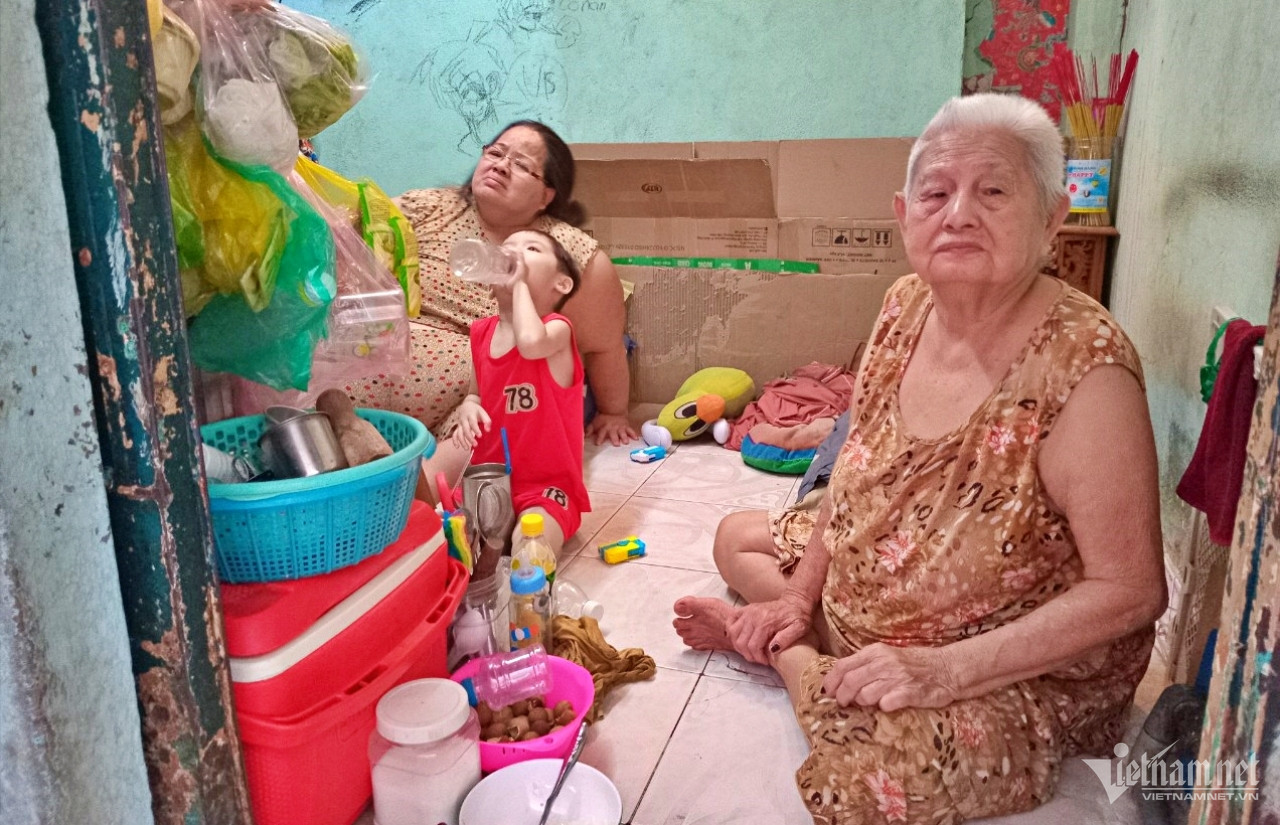
Saigonese struggle to live in 2-7 sq m rooms
Why do Saigonese continue to live in 2-3 sq m rooms?
Duong Anh Duc, District 1’s Party Committee Secretary, said the existence of "matchbox" housing in the district has been unsettled for decades.
Duc said people cannot imagine the serious situation of the slums. ‘Terrible’ is the right word used to describe the conditions.
“People all think that district 1 is the ‘district of the rich’ as it is the business center of the city. They cannot imagine that the residents in the area have to eat, sleep, have bath and use toilets in shifts because the living area is too small,” Duc said.
In Ga and Gao market areas in Cau Ong Lanh ward, Ma Lang zone (or Nguyen Cu Trinh quadrangular), and Ma Lo area in Tan Dinh ward, many households live in such conditions.
Duc said that local authorities and agencies have been trying to find solutions to clear the slums, improve people’s lives, and gentrify the urban areas. However, nothing has changed because of legal obstacles.
Many investors went to the area to seek investment opportunities, but they had to leave with empty hands as they could not develop projects despite the strong support from local authorities and residents.
Some investors had vowed to clear the tiny houses and change the face of the urban area with no profits expected. But they finally had to break their promises.
The problem is that the slum area is located in a 930-hectare zone which is subject to building-height and land-use coefficient restrictions.
Duc said if the current regulations cannot be amended, HCM City will never find a solution to the urban gentrification question.
He proposed that the Standing Committee of the HCM City Party Committee apply a special mechanism to solve the question. It is necessary to build works with a height higher than initially planned and increase the land-use coefficient.
“If we don’t have special policies, such areas will still exist even 50 years from now,” Duong said. “The central area will never become a smart urban area."
He said that district localities have invited specialists and investors to make suggestions on developing the area. Meanwhile, local agencies are comparing schemes and policies to find out what the district needs.
“Some investors said they are willing to develop projects if they can break even. We are considering their plans and their requirements before consulting with the Standing Committee of the Party Committee,” Duc said.
Local authorities at different levels once considered two solutions, either relocating residents in the residential quarter, or resettling them in the same place.
However, it was difficult to apply the latter solution, because many apartments have a small area of less than 10 sq m, while a social housing apartment has a minimum area of 30-40 sq m, and people cannot pay additional money to move to larger apartments.
Meanwhile, many local residents don’t want to leave because they fear they will lose their livelihood in new places. The people have lived there for decades and have vowed to settle down there. Some households have a 'so do' (red book, or land-use right certificate), while others do not.
“What we need to do is find a solution to develop housing projects at a minimum cost that can bring maximum benefits,” he said, adding that this is a must to improve people’s living standards.
For the time being, it is necessary to apply measures for fire prevention and control.
The two solutions needed are a special policy and investors who accept to break even, according to Duc.
At the HCM City Party Committee Conference on June 14, Party Committee Secretary Nguyen Van Nen requested agencies to urgently solve the tiny house problem, saying that people must not endure these inconveniences any longer.
Admitting that this is a difficult problem to be solved, Nen said every question has its own answer and agencies need to find the answer.
“In special cases, special measures need to be applied,” he said.
Ho Van